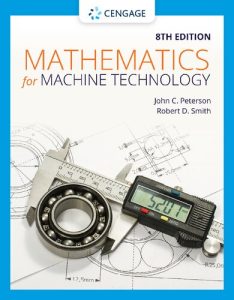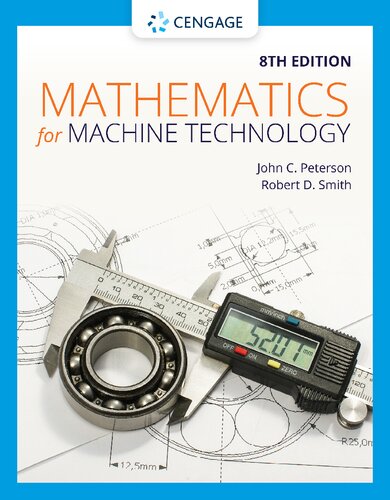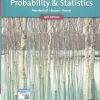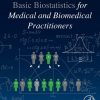Mathematics for Machine Technology 8th Edition John C. Peterson – eBook PDF
$50.00 Original price was: $50.00.$35.00Current price is: $35.00.
Mathematics for Machine Technology – Ebook PDF
Mathematics for Machine Technology – Ebook PDF Instant Delivery – ISBN(s): 9781337798310,1337798312

Product details:
- ISBN-10 : 1337798312
- ISBN-13 : 978-1337798310
- Author: John C. Peterson
Strengthen mathematical skills and gain practice using those skills in preparation for success in machine trades or manufacturing with Peterson/Smith’s MATHEMATICS FOR MACHINE TECHNOLOGY, 8E. This comprehensive book connects math concepts to relevant machine applications, using industry-specific examples, realistic illustrations and actual machine functions. Step-by-step problems and examples progress from general math to more complex trigonometry and solid geometry while demonstrating how math applies to machine trades and manufacturing fields. The authors highlight calculator operations when appropriate. New coverage in this edition emphasizes spreadsheets and introductory G- and M- codes for CNC programming. Master the practical, vocational and technical applications of math concepts necessary to excel in today’s machine, tool-and-die and tool design industries with this proven book.
Table contents:
SECTION 1: COMMON FRACTIONS AND DECIMAL FRACTIONS.
Unit 1. Introduction to Common Fractions and Mixed Numbers.
Unit 2. Addition of Common Fractions and Mixed Numbers.
Unit 3. Subtraction of Common Fractions and Mixed Numbers.
Unit 4. Multiplication of Common Fractions and Mixed Numbers.
Unit 5. Division of Common Fractions and Mixed Numbers.
Unit 6. Combined Operations of Common Fractions and Mixed Numbers.
Unit 7. Computing with a Calculator: Fractions and Mixed Numbers.
UNIT 8. Computing with a Spreadsheet: Fractions and Mixed Numbers.
Unit 9. Introduction to Decimal Fractions.
Unit 10. Rounding Decimal Fractions and Equivalent Decimal and Common Fractions.
Unit 11. Addition and Subtraction of Decimal Fractions.
Unit 12. Multiplication of Decimal Fractions.
Unit 13. Division of Decimal Fractions.
Unit 14. Powers.
Unit 15. Roots.
Unit 16. Table of Decimal Equivalents and Combined Operations of Decimal Fractions.
Unit 17. Computing with a Calculator: Decimals.
Unit 18. Computing with a Spreadsheet: Decimals.
Unit 19. Achievement Review Section One.
SECTION 2: RATIO, PROPORTION, AND PERCENTAGE.
Unit 20. Ratio and Proportion.
Unit 21. Direct and Inverse Proportions.
Unit 22. Introduction to Percents.
Unit 23. Basic Calculations of Percentages, Percents, and Rates.
Unit 24. Percent Practical Applications.
Unit 25. Achievement Review Section Two
SECTION 3: LINEAR MEASUREMENT: CUSTOMARY (ENGLISH) AND METRIC.
Unit 26. Customary (English) Units of Measure.
Unit 27. Metric Units of Linear Measure.
Unit 28. Degree of Precision and Greatest Possible Error, Absolute Error, and Relative Error.
Unit 29. Tolerance, Clearance, and Interference.
Unit 30. Customary and Metric Steel Rules.
Unit 31. Customary Vernier Calipers and Height Gages.
Unit 32. Metric Vernier Calipers and Height Gages.
Unit 33. Digital Calipers and Height Gages.
Unit 34. Customary Micrometers.
Unit 35. Metric Vernier Micrometers.
Unit 36. Digital Micrometers.
Unit 37. Customary and Metric Gage Blocks.
Unit 38. Achievement Review Section Three.
SECTION 4: FUNDAMENTALS OF ALGEBRA.
Unit 39. Symbolism and Algebraic Expressions.
Unit 40. Signed Numbers.
Unit 41. Algebraic Operations of Addition, Subtraction, and Multiplication.
Unit 42. Algebraic Operations of Division, Powers, and Roots.
Unit 43. Introduction to Equations.
Unit 44. Solution of Equations by the Subtraction, Addition, and Division Principles of Equality.
Unit 45. Solution of Equations by the Multiplication, Root, and Power Principles of Equality.
Unit 46. Solution of Equations Consisting of Combined Operations and Rearrangement of Formulas.
Unit 47. Applications of Formulas to Cutting Speed, Revolutions Per Minute, and Cutting Time.
Unit 48. Applications of Formulas to Spur Gears.
Unit 49. Achievement Review Section FOUR.
SECTION 5: FUNDAMENTALS OF PLANE GEOMETRY.
Unit 50. Lines and Angular Measure.
Unit 51. Protractors- Simple Semicircular and Vernier.
Unit 52. Types of Angles and Angular Geometric Principles.
Unit 53. Introduction to Triangles.
Unit 54. Geometric Principles for Triangles and Other Common Polygons.
Unit 55. Introduction to Circles.
Unit 56. Arcs and Angles of Circles, Tangent Circles.
Unit 57. Fundamental Geometric Constructions.
Unit 58. Achievement Review Section Five.
SECTION 6: GEOMETRIC FIGURES: AREAS AND VOLUMES.
Unit 59. Areas of Rectangles, Parallelograms, and Trapezoids.
Unit 60. Areas of Triangles.
Unit 61. Areas of Circles, Sectors, and Segments.
Unit 62. Volumes of Prisms and Cylinders.
Unit 63. Volumes of Pyramids and Cones.
Unit 64. Volumes of Spheres and Composite Solid Figures.
Unit 65. Achievement Review Section Six.
SECTION 7: TRIGONOMETRY.
Unit 66. Introduction to Trigonometric Functions.
Unit 67. Analysis of Trigonometric Functions.
Unit 68. Basic Calculations of Angles and Sides of Right Triangles.
Unit 69. Simple Practical Machine Applications.
Unit 70. Complex Practical Machine Applications.
Unit 71. The Cartesian Coordinate System.
Unit 72. Oblique Triangles: Law of Sines and Law of Cosines.
Unit 73. Achievement Review Section Seven.
SECTION 8I: COMPOUND ANGLES.
Unit 74. Introduction to Compound Angles.
Unit 75. Drilling and Boring Compound-Angular Holes: Computing Angles of Rotation and Tilt Using Given Lengths.
Unit 76. Drilling and Boring Compound-Angular Holes: Computing Angles of Rotation and Tilt Using Given Angles.
Unit 77. Machining Compound-Angular Surfaces: Computing Angles of Rotation and Tilt.
Unit 78. Computing Angles Made by the Intersection of Two Angular Surfaces.
Unit 79. Computing Compound Angles on Cutting and Forming Tools.
Unit 80. Achievement Review Section Eight.
People also search:
mathematics for machine technology 7th edition
solutions for mathematics for machine technology
cengage mathematics for machine technology
mathematics for machine technology 8th edition answer key pdf
mathematics for machine technology 7th edition answers
mathematics for machine technology chegg
how is math used in technology



